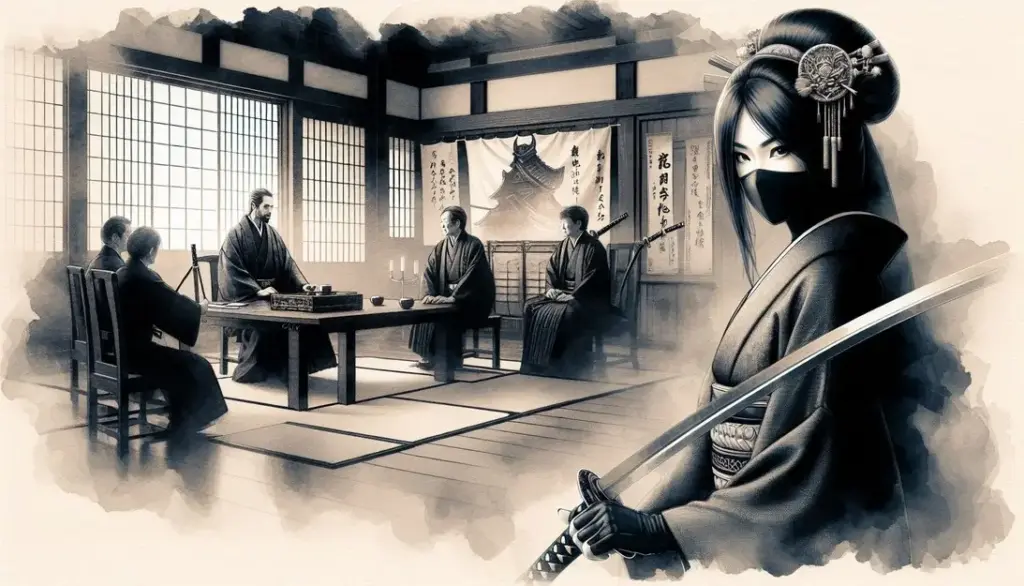Kunoichi, often seen as Japan’s female ninjas, were more than just mysterious figures of legend. The term originally meant “woman” in Japanese but later became linked to espionage and infiltration. Rooted in historical texts and folklore, kunoichi were skilled operatives who used their roles as maids or servants to gather intelligence. This unique blend of stealth and cunning has made them an enduring symbol of resourcefulness in Japanese culture, capturing the imagination of people worldwide.
The Meaning of Kunoichi
To truly understand what is Kunoichi, we need to look at its roots in both language and history. The word is much more than a simple label for female ninjas — it’s a linguistic and cultural puzzle that reveals fascinating insights into Japanese tradition.
The Kanji Breakdown
At its core, the word “kunoichi” is visually and conceptually tied to the kanji for “woman” (女). How? It’s a bit like solving a riddle hidden within the strokes of the character. Let’s break it down:
- The kanji 女 is composed of three key elements:
- ク (ku) – The top stroke resembles the katakana character “ku”.
- ノ (no) – The second stroke mirrors the katakana character “no”.
- 一 (ichi) – The bottom stroke symbolizes the number one, or “ichi”, in Japanese.
When you combine these, you essentially “spell out” the term kunoichi (くノ一). These strokes, when pieced together, represent “woman” in a poetic and phonetic manner. It’s remarkable how the concept of gender was woven into the very fabric of language, giving rise to such a unique term. For additional context, you can explore this concept further on Tanoshi Japanese, which provides kanji stroke analysis.
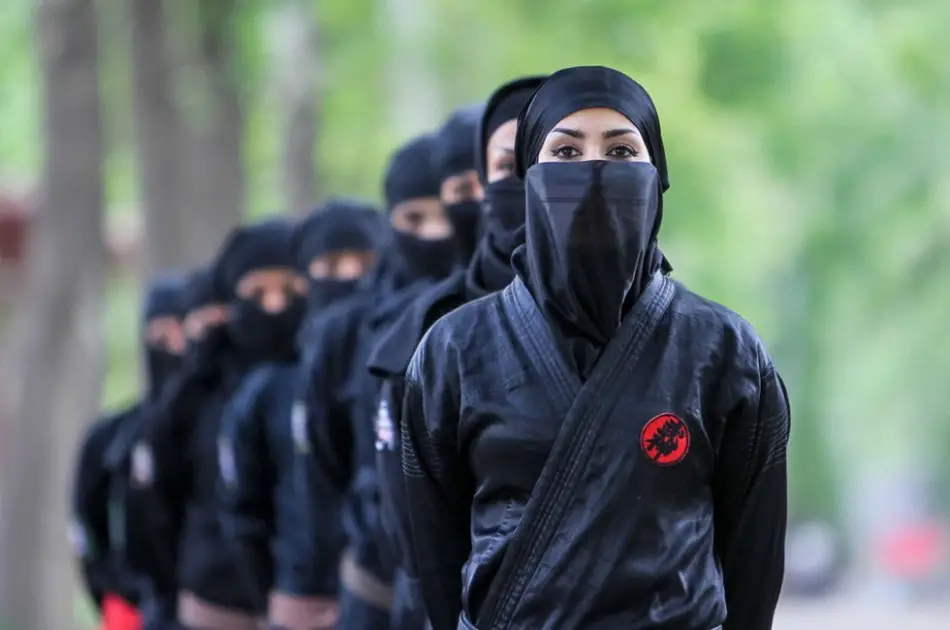
Cultural Context
The word “kunoichi” didn’t always refer to female ninjas. Historically, it simply meant “woman.” However, during Japan’s feudal era, it gained a completely new identity. Why? Because women often had access to spaces and roles that men couldn’t infiltrate. They became ideal for espionage, blending into households as maids, entertainers, or even courtesans.
These women, skilled in intelligence gathering and subtle combat, became the female counterparts to male ninjas. They could disarm suspicion with their appearance while carrying out high-stakes missions. Over time, kunoichi was popularized to specifically signify these female operatives. Their contribution to shinobi clans played an important role in feudal warfare and survival. Dive deeper into their historical significance on Kage Ninja Gear.
The cultural shift in the meaning of kunoichi reflects the innovative use of language and role adaptation during historical times. It’s incredible how one term can evolve from describing gender to defining a way of life entrenched in secrecy and skill.
Historical References to Kunoichi
The kunoichi, or female ninja, were pivotal figures in feudal Japan. Often overlooked in mainstream depictions of ninjas, these women played significant roles in espionage, intelligence gathering, and sometimes even direct confrontation. Their contribution to shinobi clans was both strategic and essential for survival during tumultuous times.
The Role of Women in Ninja Clans
In Japan’s feudal era, women often had access to areas that men could not penetrate. This gave female operatives a unique edge. Kunoichi were trained in the ways of subterfuge, deception, and combat, but their primary strength lay in blending seamlessly into their surroundings. They could pose as maids, entertainers, or commoners, gaining the trust of enemies to extract critical information.
The shinobi clans prized their skills in psychological manipulation and infiltration. A kunoichi might use charm to disarm suspicion, or even seduction to get close enough to achieve her mission. Unlike male ninjas who often relied on brute force or stealth, female ninjas used society’s assumptions about women to their advantage. This unique duality of societal norms and covert skill made them indispensable to warfare strategy.
For more context on their role in the ninja clans, explore this resource on the history of female ninjas.
Mentions in the Bansenshukai Handbook
The Bansenshukai, an influential 17th-century ninja manual, offers a rare insight into the life and strategies of shinobi, including kunoichi. Within its pages, there are mentions of female spies’ tactics and purposes. The handbook emphasizes the importance of espionage, which was often the kunoichi’s main focus.
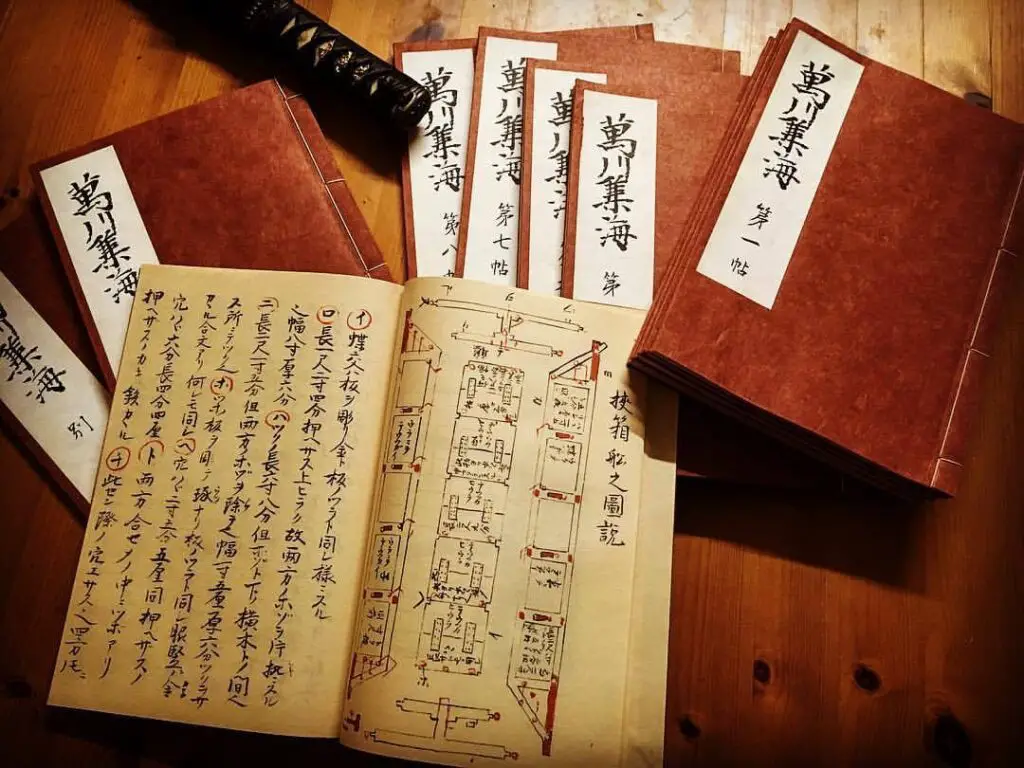
It describes the training of female operatives to exploit societal roles — working as servants or entering homes under the guise of common professions. The combination of combat skills and psychological strategy was a hallmark of their training regimen. Interestingly, kunoichi were also noted for their use of unconventional weapons, such as hairpins, fans, or powders, which could be easily concealed.
The Bansenshukai portrays the kunoichi as masters of strategy, proving that their contributions to espionage were far more than a supporting role. You can learn more about what the Bansenshukai reveals about kunoichi in a detailed discussion here.
Famous Figures Suspected to Be Kunoichi
One of the most renowned figures associated with kunoichi is Mochizuki Chiyome. She is credited with creating what might be described as Japan’s first network of female spies. According to legend, Chiyome trained up to 200 women to serve the Takeda clan during the Sengoku period. These women, often widows or orphans, were taught martial arts, disguise techniques, and espionage skills.
However, historical consensus is mixed. While Chiyome’s exploits are celebrated in folklore, concrete evidence of her life and achievements is scarce. Regardless of historical accuracy, her legacy endures as an inspiration for the concept of the kunoichi. You can dive into the intriguing story of Mochizuki Chiyome here.
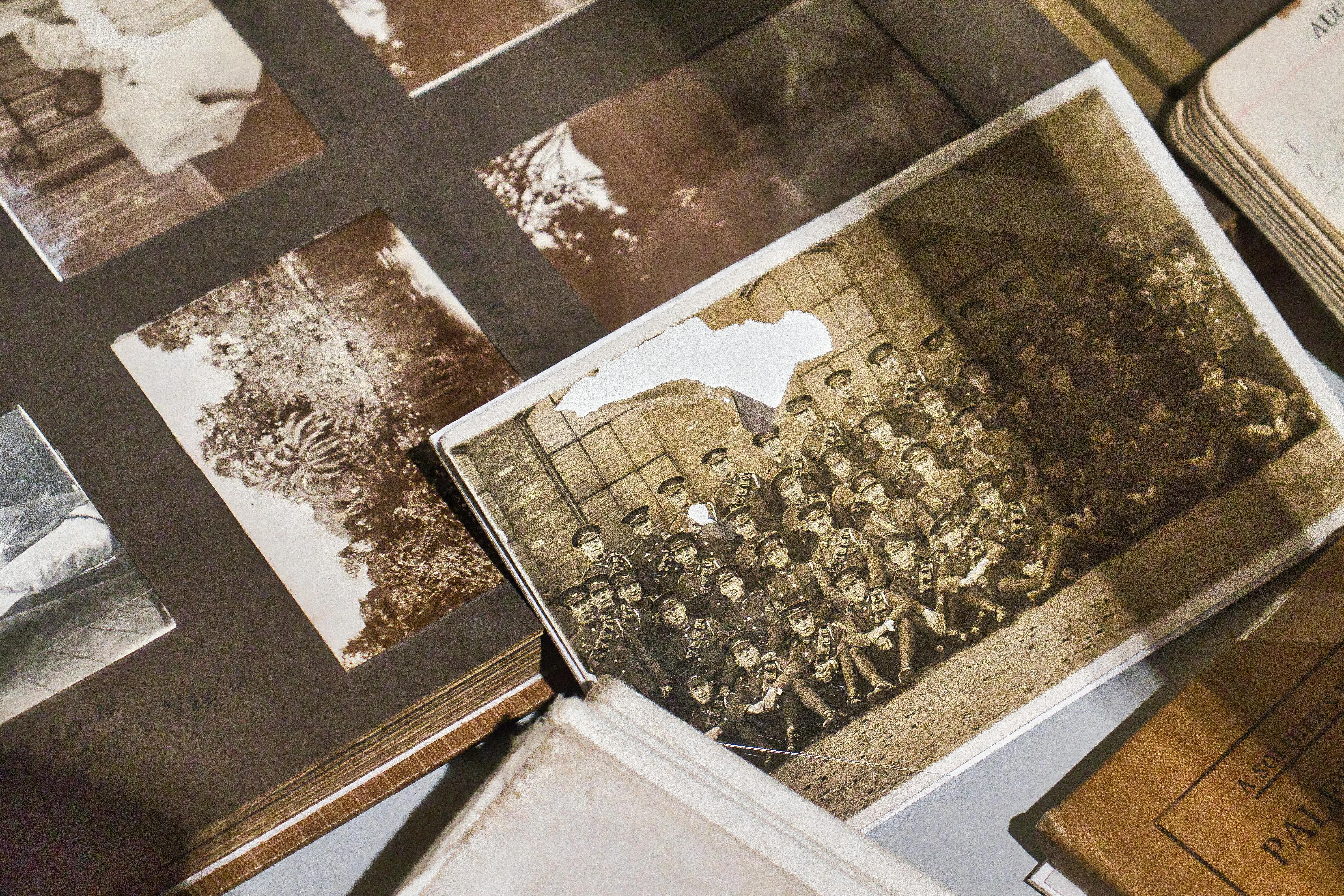
Photo by T6 Adventures
These historical references provide just a glimpse into the lives of kunoichi. Whether through espionage manuals or legendary figures, their impact on feudal Japan is undeniable.
Techniques and Skills of the Kunoichi
The kunoichi, or female ninja, were masters of strategy and subtlety. Their capabilities extended beyond physical combat, diving deep into psychological and social nuances that shaped their roles as spies, warriors, and operatives. Let’s explore the techniques that made kunoichi so effective in their missions.
Espionage and Disguise
One of the kunoichi’s greatest strengths was their ability to blend into everyday life. They used their gender as both a shield and a weapon, effortlessly exploiting societal perceptions to infiltrate enemy territory. By disguising themselves as maids, entertainers, or even widows, kunoichi gained access to places where male shinobi could never venture. In traditional Japanese households, women typically managed inner affairs. This gave kunoichi access to private spaces where they could collect secrets or sabotage plans unnoticed.
Their use of disguise was not just about clothing; it was a mindset. They became the roles they played, disarming suspicion with their believability. For instance, some kunoichi allegedly hid messages or small weapons in their hair ornaments or accessories, ensuring their tools were as covert as their intentions. Historical accounts, such as those referenced in the Athlon Outdoors article, highlight how their ability to exploit societal roles and stereotypes made kunoichi indispensable in espionage.
Weapons of the Kunoichi
Kunoichi relied on weapons that were easy to conceal but deadly in use. Unlike male ninjas, who might carry swords or large tools, female operatives needed to complement their stealth with practicality. Here are some iconic weapons and tools used by kunoichi:
- Neko-te (claw weapons): These sharp, claw-like weapons were strapped to the fingers, making them perfect for close-quarters combat.
- Tessen (steel fans): At first glance, a tessen appeared as a harmless accessory. However, these fans were reinforced with steel and could be used for self-defense or offense in emergencies.
- Concealed blades: Small knives or daggers hidden in sleeves, hairpins, or sashes allowed kunoichi to attack or defend at a moment’s notice.
- Poisons and powders: It’s believed they used various toxins or blinding powders for assassination or escape.
The versatility of these tools reflects the kunoichi’s ingenuity. To learn more about ninja weapons, including those specific to kunoichi, check Koka Ninja House’s detailed list.
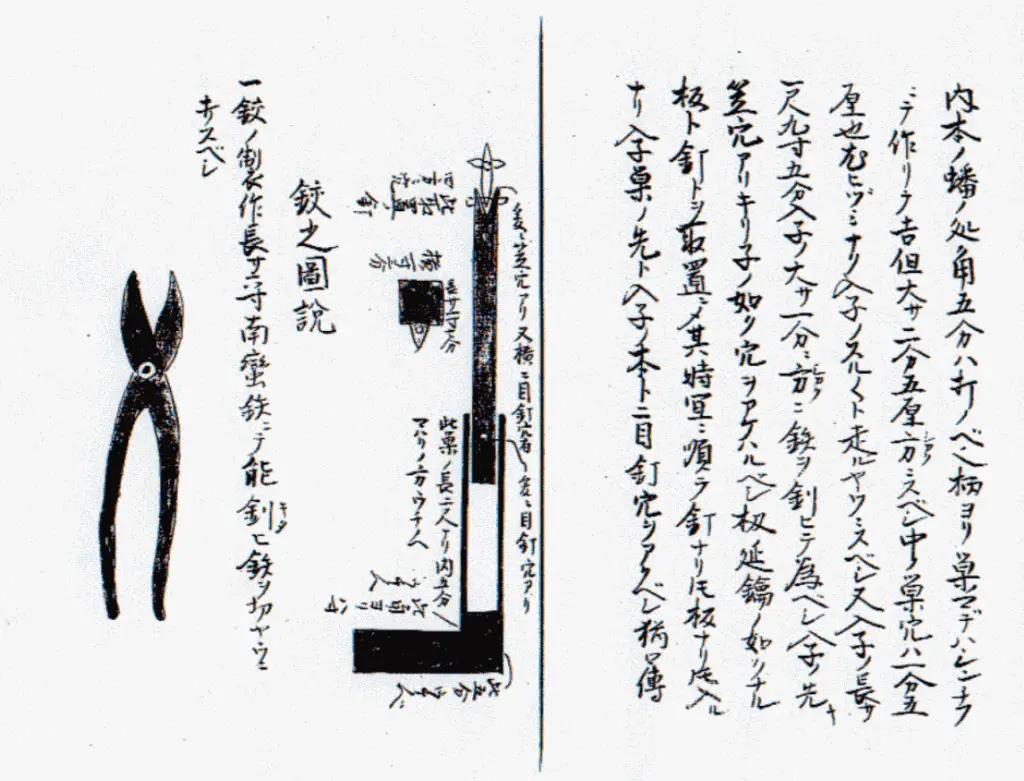
Psychological Manipulation
What made kunoichi truly fearsome was their ability to manipulate the mind. They weren’t just warriors; they were strategists. By leveraging charm, deception, and subtlety, they could influence behaviors, gather secrets, or dismantle rival plans.
Kunoichi often used flattery, feigned vulnerability, or emotional connections to extract vital information from targets. Sometimes, they employed more elaborate schemes, posing as lovers or confidantes to gain unrestricted access to sensitive dealings. This required not only sharp instincts but also thorough training in human behavior and social dynamics.
Their psychological tactics were so effective that they resembled modern-day psychological warfare strategies. By observing their enemies and exploiting weaknesses — such as arrogance, greed, or lust — kunoichi turned the tables in their favor. For an in-depth examination of their strategies, check out this informative guide on kunoichi tactics.
The techniques and skills of the kunoichi demonstrate how deeply intertwined stealth, intelligence, and adaptability were in their missions. They remind us that power isn’t just about physical force but also about the ability to outthink and outmaneuver opponents.
Kunoichi in Japanese Popular Culture
The kunoichi has inspired countless stories in Japanese popular culture, spanning books, anime, movies, and video games. These portrayals have built on historical lore, turning the kunoichi into a widely recognized archetype. From stealthy warriors to multi-faceted heroines, their representation reflects a blend of tradition and imagination.
Futaro Yamada’s Influence
Futaro Yamada’s literary works played a major role in introducing the idea of kunoichi to modern audiences. Yamada, a critically acclaimed novelist, breathed new life into the ninja genre with his Ninpōchō series, including The Kōga Ninja Scrolls. These books elevated the concept of the kunoichi from obscure historical references to key protagonists in dramatic, action-packed stories.
In particular, Yamada wove the kunoichi into gripping tales of feudal warfare, betrayal, and espionage. His sharp storytelling not only honored the mystique of these female warriors but also amplified their abilities with creative liberties. For example, kunoichi characters in Yamada’s novels often possess heightened agility, mastery of poisons, and a strong command of psychological tactics. These depictions laid the groundwork for how future creators in film, manga, and video games would imagine female ninjas. To explore Yamada’s influence further, check out an overview of his works here.
Representation in Anime and Manga
Anime and manga have taken the concept of kunoichi into bold and colorful directions. These mediums embrace the flexibility of animation and illustrated storytelling to expand on their powers and personalities. Characters inspired by kunoichi are often depicted as daring, resourceful, and highly skilled in combat.
Some iconic kunoichi characters include:
- Mai Shiranui from Fatal Fury: A glamorous martial artist, Mai combines traditional kunoichi elegance with modern flair.
- Tenten from Naruto: Known for her proficiency with a wide array of weapons, Tenten showcases a modern interpretation of kunoichi traits.
- Yoruichi Shihouin from Bleach: Mixing speed with intelligence, Yoruichi channels the stealth and combat skills historically tied to kunoichi.
Kunoichi themes also feature prominently in series such as Senran Kagura, where students learn the art of ninja warfare while navigating dramatic personal conflicts. These stories effectively merge the mystique of ancient Japan with the aesthetics of contemporary storytelling. For more kunoichi characters in anime and manga, check this list.
Movies and Video Games
Kunoichi have found a strong foothold in video games and cinema, portraying them as not just warriors but also complex characters with gripping storylines. Video games, in particular, allow audiences to “become the kunoichi,” immersing players in their stealth and combat techniques.
Video Games:
- Samurai Warriors: Features Kunoichi Sanada, a devoted follower of Yukimura Sanada, showcasing both loyalty and courage.
- Dead or Alive: Characters like Ayane and Kasumi put a playful yet competitive spin on the classic kunoichi archetype.
- Shinobi: This iconic series features kunoichi characters in a darker, action-oriented setting, highlighting their martial arts expertise.
Movies:
Modern Japanese cinema often ties kunoichi directly to historical action films or blends them into modern-day adaptations. Characters like the fictionalized Mochizuki Chiyome have appeared in screenplays, showcasing the untold stories of feudal Japan. These portrayals often emphasize their deadly balance of grace and power.
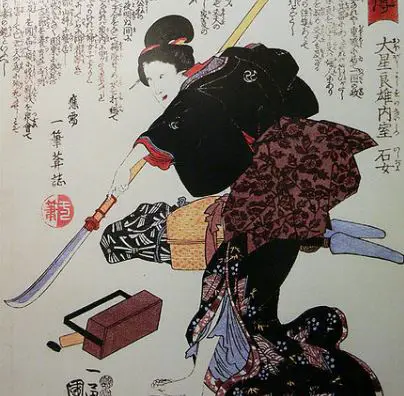
To explore top kunoichi appearances in gaming, see this detailed list.
These depictions, whether in films or games, highlight how versatile and enduring the concept of the kunoichi is. Their image evolves with each medium while preserving their essence as skilled warriors framed in rich, multi-dimensional storytelling.
Debates About the Existence of Kunoichi
The kunoichi, or female ninjas, are shrouded in an aura of mystique and contradiction. While their stories capture the imagination, they are often entwined with myths, leaving historians divided on their actual existence and roles. To better understand this, we need to investigate the evidence—or lack thereof—that supports their place in history.
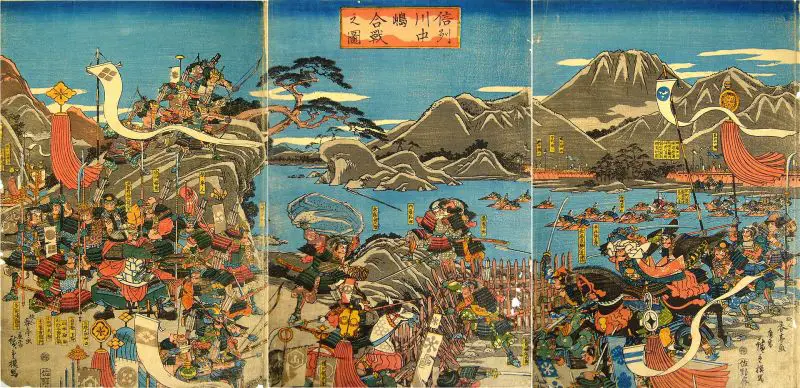
Historical Evidence vs. Fiction
When examining kunoichi, it’s challenging to separate fact from fiction. References to female ninjas are scarce in historical texts, and many accounts are steeped in folklore or exaggerated tales. One significant source, the Bansenshukai—a 17th-century ninja manual—briefly touches on the use of female agents for espionage. However, these mentions are vague, leaving plenty of room for interpretation.
In contrast, popular depictions, like those in movies or manga, often portray kunoichi as highly trained seductresses or deadly assassins. These representations have less to do with historical fact and more to do with storytelling. The elaborations seen in media frequently draw inspiration from Japan’s dramatic literary traditions. For instance, the Reddit discussion on kunoichi underlines that the seductive spy archetype is largely a product of Edo-period fiction.
Even figures like Mochizuki Chiyome, often cited as the founder of a kunoichi network, sit at the crossroads of legend and history. While her story is fascinating, concrete proof of her endeavors remains elusive. More insights on her enigmatic background can be explored on Risuko.
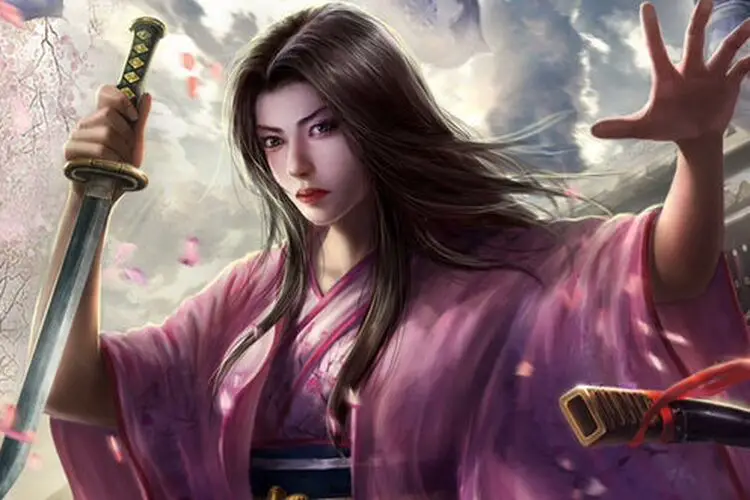
So, are the stories a blend of reality and creative embellishment, or are they entirely fictional? Scholars argue that the truth might lie somewhere in between. The perception of kunoichi reflects not just historical memory but also cultural ideals about gender roles and ingenuity during Japan’s feudal era.
Modern Research and Findings
Modern historians have taken a fresh look at kunoichi by scrutinizing both historical records and cultural texts. Researchers like Yuji Yamada of Mie University argue that while women likely participated in espionage, the iconic image of the kunoichi as martial artists likely stems from post-feudal storytelling. In fact, modern evidence suggests that the term “kunoichi” as a reference to female ninjas emerged much later than the periods it’s often associated with. For more on this, browse Wikipedia’s entry on kunoichi.
In recent years, the debate has shifted from the actions of individual kunoichi to their symbolic representation. Could they have been women who used societal expectations to achieve covert aims, rather than trained fighters? This idea aligns with broader research on the roles of women in espionage throughout history.
Additionally, oral and regional traditions often keep the stories of kunoichi alive. Local legends and speculative narratives, such as those found on platforms like Blossom Kitty, highlight how intertwined these figures are with Japan’s cultural fabric.
While no definitive answer exists, one thing is clear: the kunoichi have sparked a dialogue about how history and legend intersect. Modern scholarship often focuses as much on what these tales signify culturally as it does on verifying their historical accuracy.
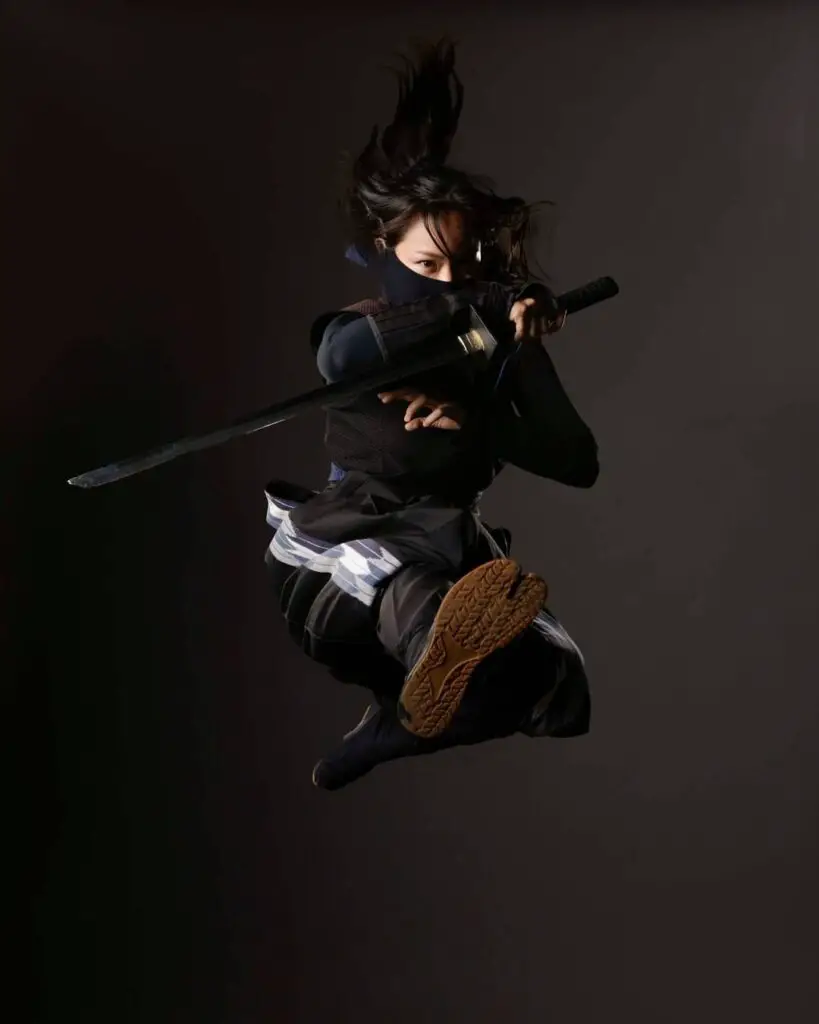
Whether kunoichi were real or merely the products of imagination, their stories remain a compelling aspect of Japan’s historical and cultural legacy. They remind us that history isn’t just about what happened but also about the stories we tell to understand it.
Conclusion
Kunoichi symbolizes the ingenuity and resourcefulness of historical espionage in Japan. Whether as legends or realities, they reflect how women used societal roles to carry out missions unseen by the world. The term connects history, language, and culture, keeping the fascination with skilled female ninjas alive in our imagination.
From ancient scrolls to modern films and games, kunoichi remains a timeless example of intelligence and adaptability. Their legacy challenges stereotypes and reminds us of the power of unconventional strategies in difficult times. Keep exploring their stories, and let their mysterious impact inspire curiosity about history and beyond.

